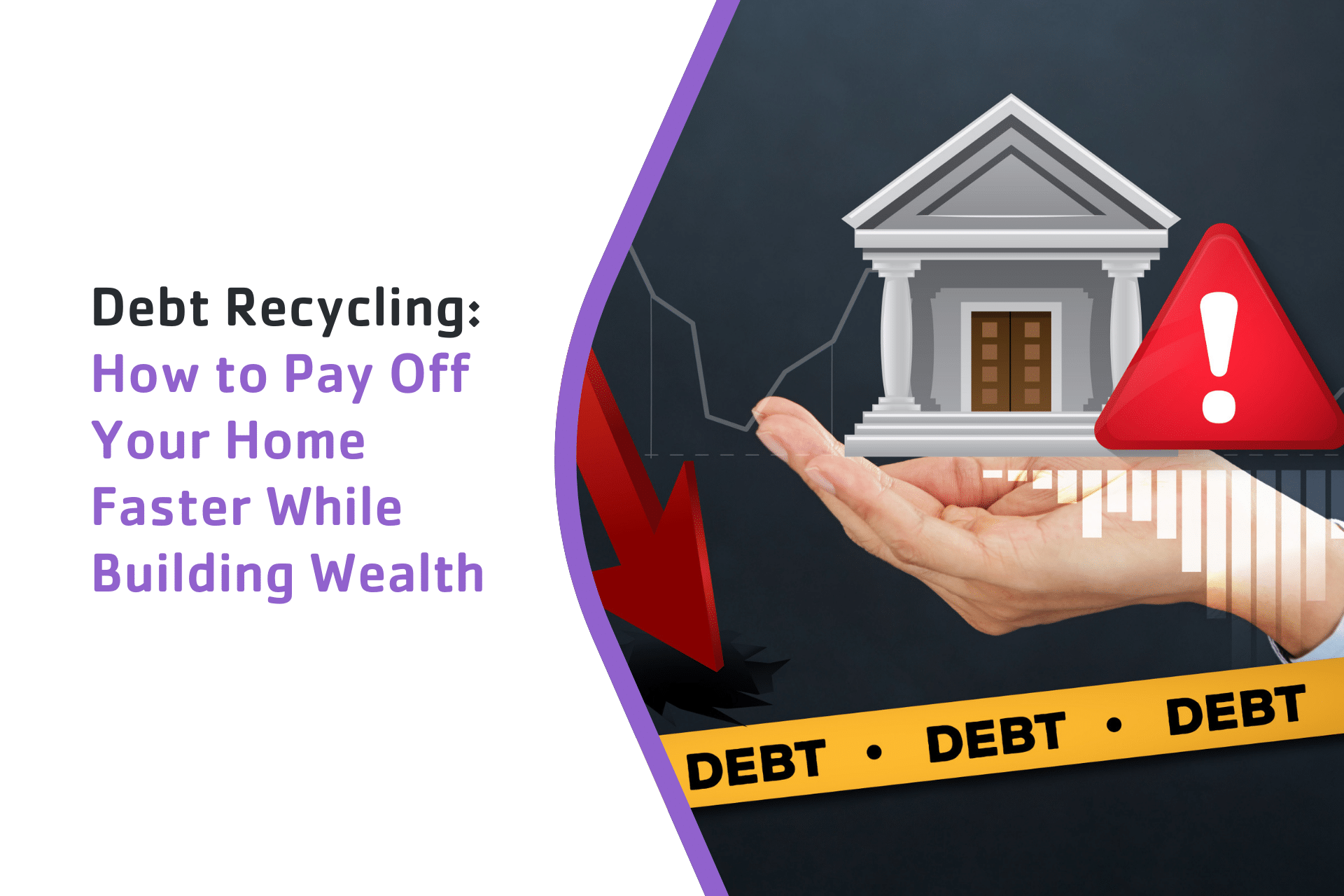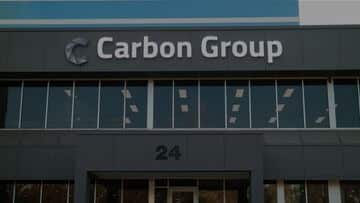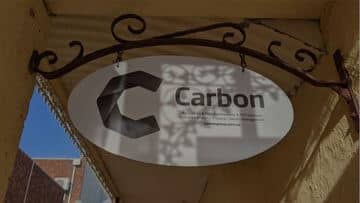As a homeowner, you’re likely juggling the competing goals of paying off your mortgage and investing for the future. Debt recycling is a strategic approach that allows you to work towards two financial goals at once, reducing your home loan debt while growing an investment portfolio in a tax-effective way.
But what exactly is debt recycling and how do you know if it’s the right financial planning strategy for you?
Table of Contents
What is Debt Recycling?
Debt recycling involves taking the equity you’ve built up in your home and reinvesting it into income-generating assets, such as shares or investment properties. The interest payments on these investments are usually tax-deductible, which provides tax savings that you can then use to pay down your home loan quicker. Over time, this strategy allows you to replace non-deductible debt with deductible debt, a powerful shift that can accelerate both wealth creation and mortgage reduction.
How Does Debt Recycling Work?
Debt recycling operates as a repeating cycle where you repay part of your home loan, then borrow the same amount back to invest. This ongoing loop enables you to grow your investment portfolio while gradually converting your non-deductible debt into tax-deductible debt.
The typical steps include:
- Making additional repayments on your home loan.
- Setting up a loan split or line of credit to separate investment debt from your main mortgage.
- Borrowing against your equity and investing in income-producing assets.
- Using the investment income and any tax savings to pay down your home loan faster.
- Repeating the process over time to progressively replace your mortgage with tax-deductible debt.
Debt Recycling Example
Imagine you own a property valued at $700,000 and still owe $400,000 on the mortgage. You’ve accumulated $100,000 in an offset account, which you use to reduce your mortgage. You then redraw or refinance this $100,000 into a new loan and use it to purchase income-generating investments, like shares. Because this new loan was used for investment purposes, the interest becomes tax-deductible.
As your investments generate income and you receive tax deductions on the interest, you can use those benefits to reduce your mortgage even faster. The result? You’re growing your wealth while simultaneously paying off your home.
Key Benefits of Debt Recycling
Debt recycling offers a range of benefits.
- Pay off your home faster: Redirect tax savings and investment income into your home loan.
- Build wealth sooner: Start investing immediately rather than waiting until your home is fully paid off.
- Tax efficiency: Convert non-deductible debt into tax-deductible debt, potentially saving thousands each year.
- Improved cash flow: As your investments grow, so can your passive income.
- Better use of equity: Your home equity becomes a wealth-building tool, not just untapped value.
Debt Recycling Risks to Consider
While debt recycling can be a powerful way to build wealth, it isn’t without risks, and it’s certainly not a set-and-forget strategy.
Because it involves borrowing to invest, you’re exposed to market fluctuations. If your investments underperform, you could be left with debt that isn’t generating the expected returns. Rising interest rates can also increase your loan repayments and eat into your cash flow.
This strategy also relies heavily on discipline. It only works when you consistently use investment income and tax savings to reduce your mortgage, not fund lifestyle expenses. And while the benefits can be significant, they take time. Debt recycling is a long-term approach that requires stable income, a clear investment plan and the patience to ride out market ups and downs.
Is Debt Recycling Right for You?
Debt recycling isn’t a one-size-fits-all strategy; it can be highly effective but it may not suit every financial situation.
- Have built equity in your home
- Earn a stable, reliable income
- Are comfortable with investment risk
- Have a long-term financial outlook
- Want to build wealth without waiting to finish paying off your home
If that sounds like you, then this strategy might be worth exploring further, ideally with guidance from a financial adviser who can assess whether it suits your goals, risk tolerance and personal circumstances.
Getting Started with Debt Recycling
Getting the setup right from the beginning is crucial before committing to a debt recycling plan. Your loan should be set up in a way that separates personal (non-deductible) and investment (deductible) debt, often using loan splits or separate facilities. You’ll also need an investment strategy that suits your risk profile and objectives.
That’s why speaking to a financial adviser and mortgage broker is so important. At Carbon, our Wealth Management and Finance & Lending teams work together to ensure your structure is tax-effective, your investment plan is sound, and your financial goals stay on track.
Want to find out if debt recycling fits your financial goals? Get in touch our financial advisers for a tailored strategy that’s structured to maximise your returns while reducing your mortgage.
FAQs About Debt Recycling
Debt recycling is most commonly applied to home loans because they are non-deductible, and converting this debt into tax-deductible investment debt offers the greatest benefit. Technically, it can be used for any non-deductible debt, but it typically doesn’t make sense for things like car loans or credit cards. Home loans are large, long-term, and secured, making them ideal for this strategy.
Yes, as it involves borrowing to invest, it carries investment risk and relies on steady income and interest rates staying manageable. It’s best suited to people who have a long-term view and tolerance for short-term market volatility.
Shares, managed funds, ETFs and investment properties, any income-producing assets where the interest on the loan used to acquire them can be claimed as a tax deduction.
You can, but it’s important to plan ahead. If you pay down your current home loan (which will later become deductible as an investment property), you could lose valuable tax deductions in future. A strategic structure, potentially using an offset instead of paying down the loan directly, can help preserve tax efficiency. This is where professional advice becomes essential.
Using loan splits or lines of credit makes it easier to keep deductible and non-deductible debt separate. This clarity is crucial for tracking interest and claiming deductions accurately.
Offset accounts are great for flexibility, but for debt recycling, redraw facilities linked to split loans are typically more effective as they create a clear paper trail showing borrowed funds were used for investing.






















